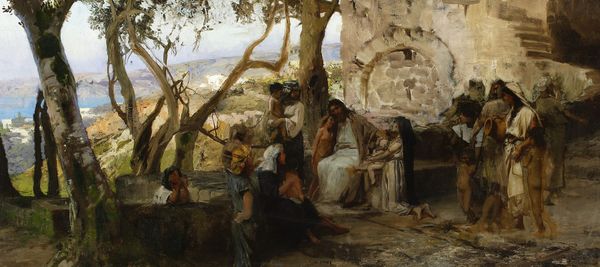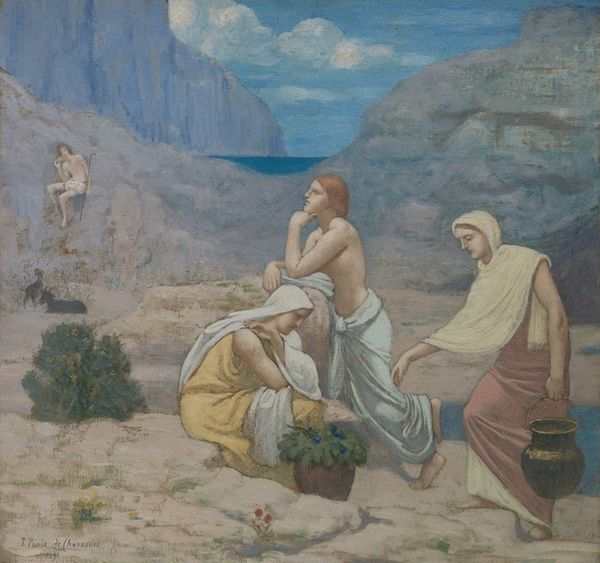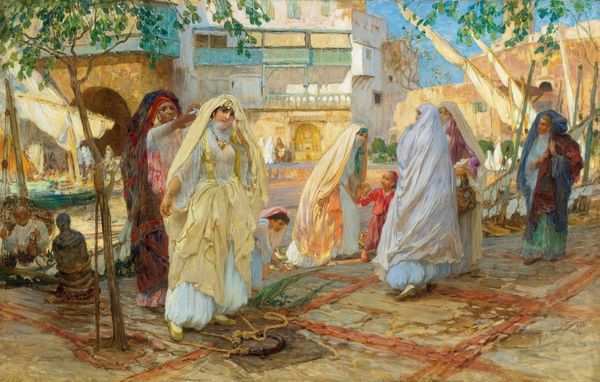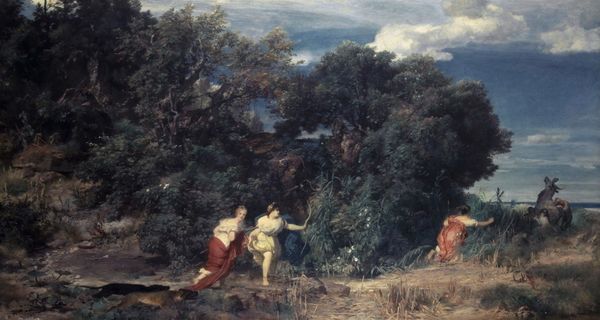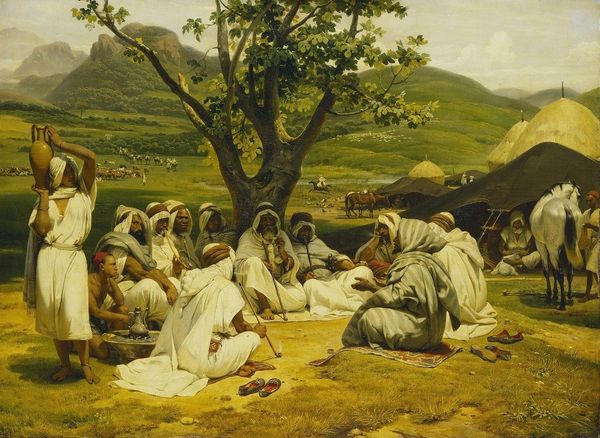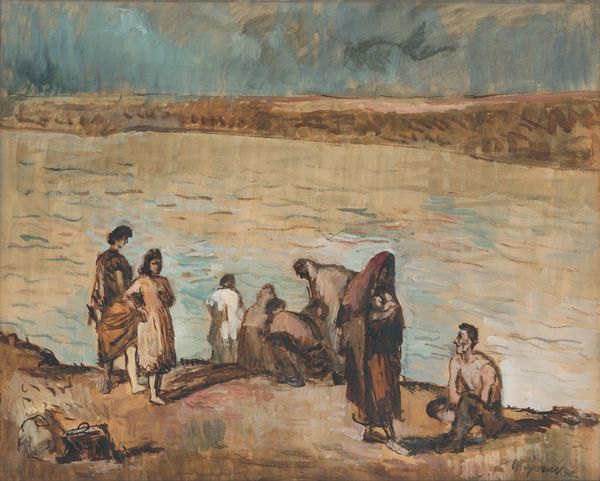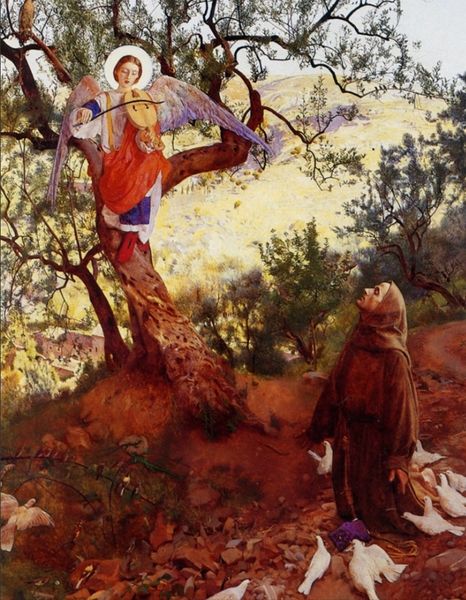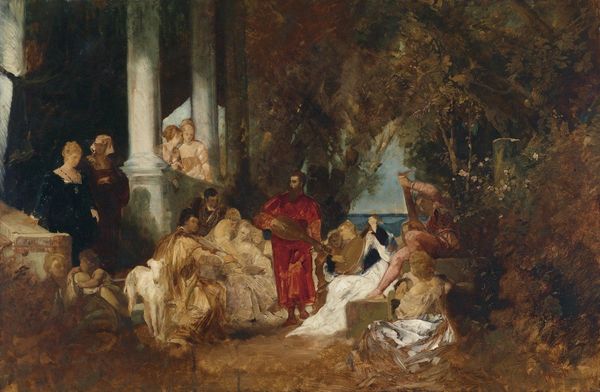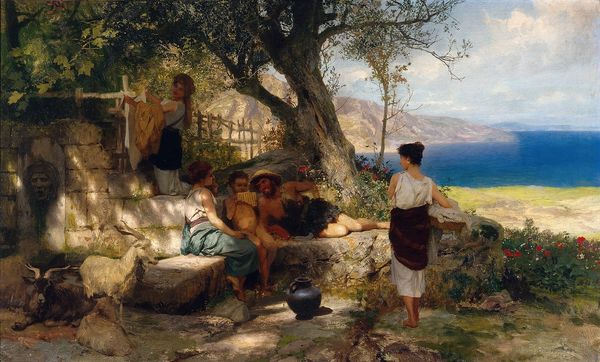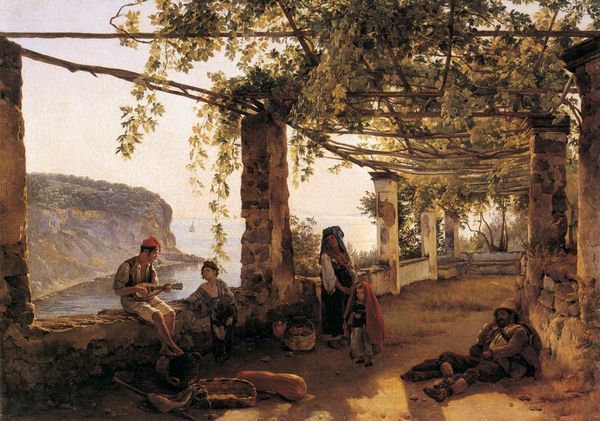
painting, oil-paint
#
figurative
#
painting
#
oil-paint
#
landscape
#
figuration
#
oil painting
#
orientalism
#
genre-painting
#
academic-art
#
watercolor
Copyright: Public Domain: Artvee
Editor: Here we have Frederick Arthur Bridgman's oil painting, "At the Water's Edge." It feels quite tranquil, almost dreamlike with its warm colors and gentle composition. The light reflecting on the water is especially captivating. What do you see when you look at this piece? Curator: Oh, it sweeps me right into a sun-drenched afternoon! Beyond the surface beauty, I see a glimpse into the Orientalist movement, where artists of the time, often from Western countries, interpreted the Middle East and North Africa through a romantic lens. Bridgman, in particular, lived and worked in Algeria. It's impossible to separate this context from our viewing. Notice the clothing and the figures, how do you interpret the subjects interacting by the water? What stories might unfold here, do you imagine? Editor: It’s true that it’s easy to get swept up by the beauty and perhaps overlook the artist's perspective and possible romanticized views. Perhaps the two figures standing at the water’s edge might be thinking, observing, sharing stories of their own. The other one crouched, drawing the water. Maybe their clothes and jewelry were what captured Bridgman's eye, or maybe their shared labour, their lives around water? It definitely prompts questions! Curator: Absolutely, and it's vital we ask those questions. To understand is not to condone but to become aware of different perspectives. As an exercise of empathy we try to appreciate beauty even where we understand biases may have tinted its creation, no? What I'm taking away is this delicate dance between observation and imagination. Between the real and the… re-imagined. Editor: A delicate dance, indeed! This has opened up new ways for me to consider paintings within the Orientalist tradition. Thanks so much.
Comments
No comments
Be the first to comment and join the conversation on the ultimate creative platform.


